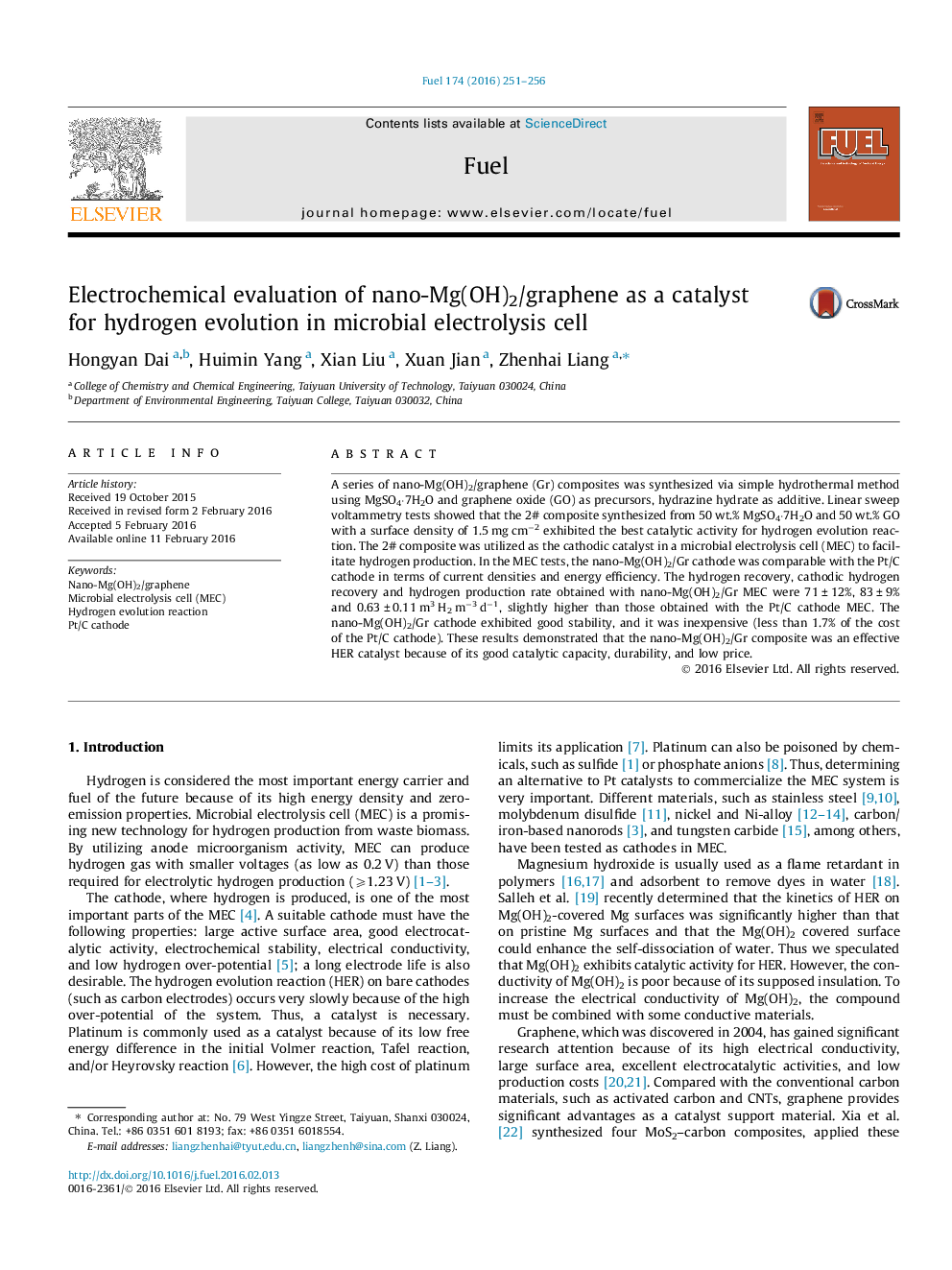| Article ID | Journal | Published Year | Pages | File Type |
|---|---|---|---|---|
| 205053 | Fuel | 2016 | 6 Pages |
A series of nano-Mg(OH)2/graphene (Gr) composites was synthesized via simple hydrothermal method using MgSO4·7H2O and graphene oxide (GO) as precursors, hydrazine hydrate as additive. Linear sweep voltammetry tests showed that the 2# composite synthesized from 50 wt.% MgSO4·7H2O and 50 wt.% GO with a surface density of 1.5 mg cm−2 exhibited the best catalytic activity for hydrogen evolution reaction. The 2# composite was utilized as the cathodic catalyst in a microbial electrolysis cell (MEC) to facilitate hydrogen production. In the MEC tests, the nano-Mg(OH)2/Gr cathode was comparable with the Pt/C cathode in terms of current densities and energy efficiency. The hydrogen recovery, cathodic hydrogen recovery and hydrogen production rate obtained with nano-Mg(OH)2/Gr MEC were 71 ± 12%, 83 ± 9% and 0.63 ± 0.11 m3 H2 m−3 d−1, slightly higher than those obtained with the Pt/C cathode MEC. The nano-Mg(OH)2/Gr cathode exhibited good stability, and it was inexpensive (less than 1.7% of the cost of the Pt/C cathode). These results demonstrated that the nano-Mg(OH)2/Gr composite was an effective HER catalyst because of its good catalytic capacity, durability, and low price.
